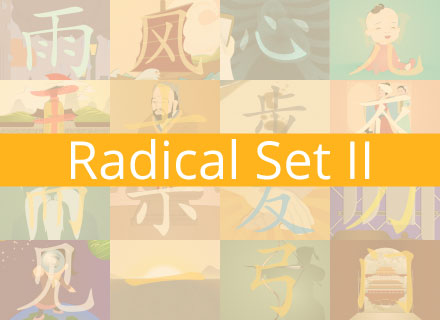样 Yàng | "Shape, Sample" 
样 is a phono-semantic compound composed of the 木 (mù) radical on the left and the phonetic character 羊 (yáng) on the right. In its traditional form 样 is written as “様” with 羕 (yàng) as the phonetic component.
样 can mean “shape”, “form”, “pattern”, or “sample”. This character is most often found in words that relate to the appearance of something such as: 样子 (yàng zi) “look”, 模样 (mú yàng) “appearance”, 图样 (tú yàng) “pattern”, and 样品 (yàng pǐn) “sample”.
- Category: Phono-Semantic Compound
- Component Characters: 木 Mù | "Tree, Wood" and 羊 Yáng | "Sheep"










